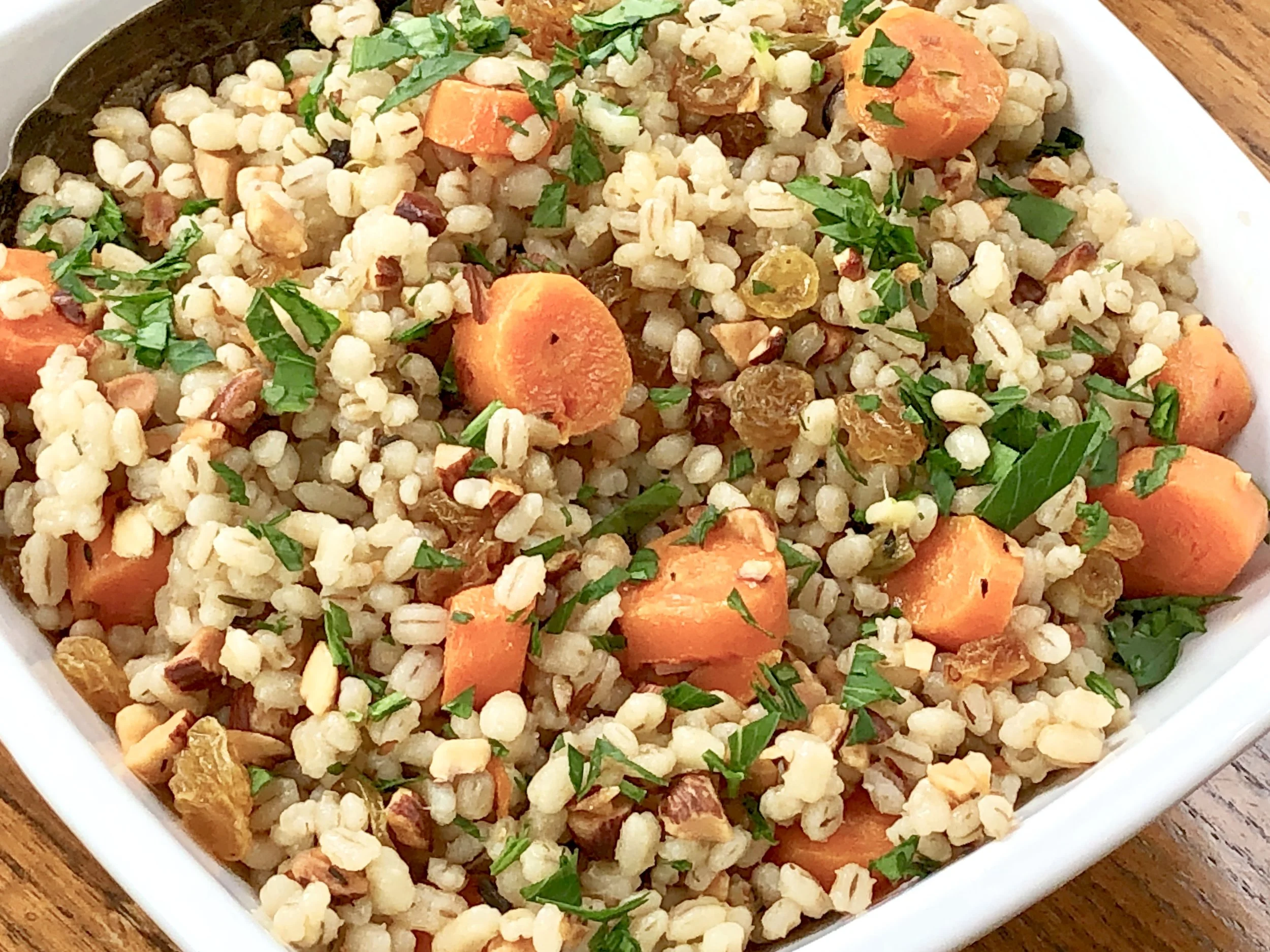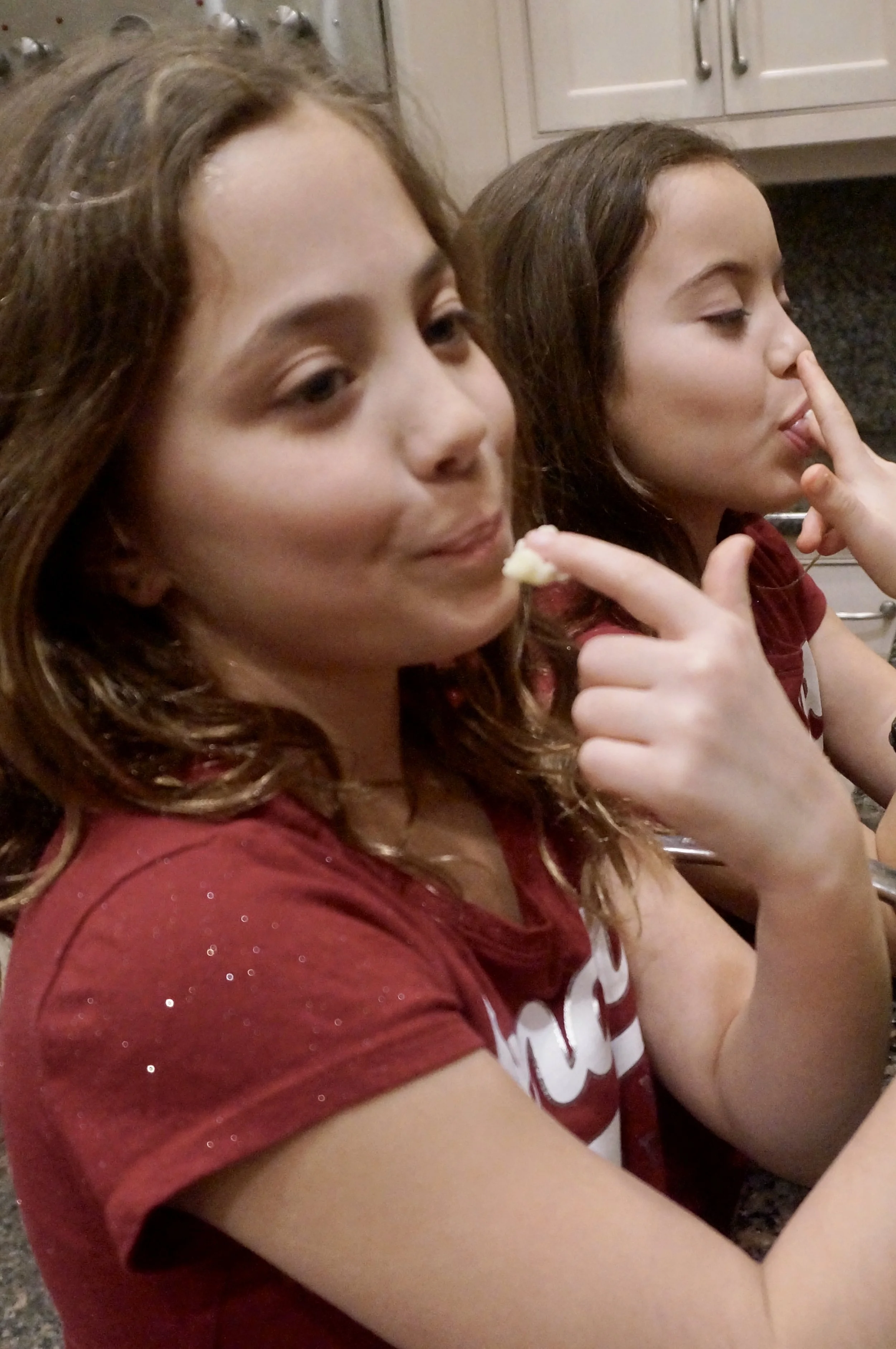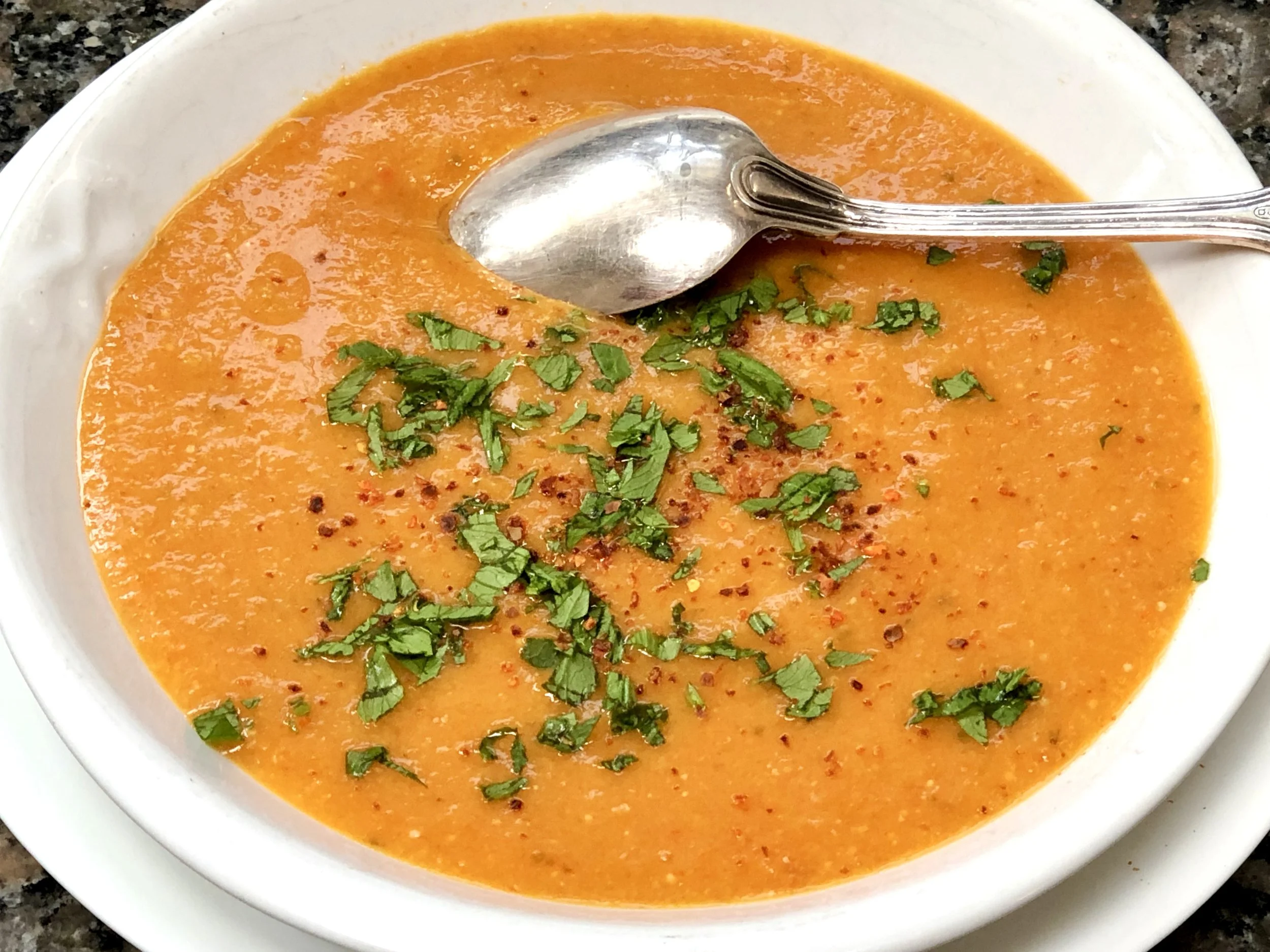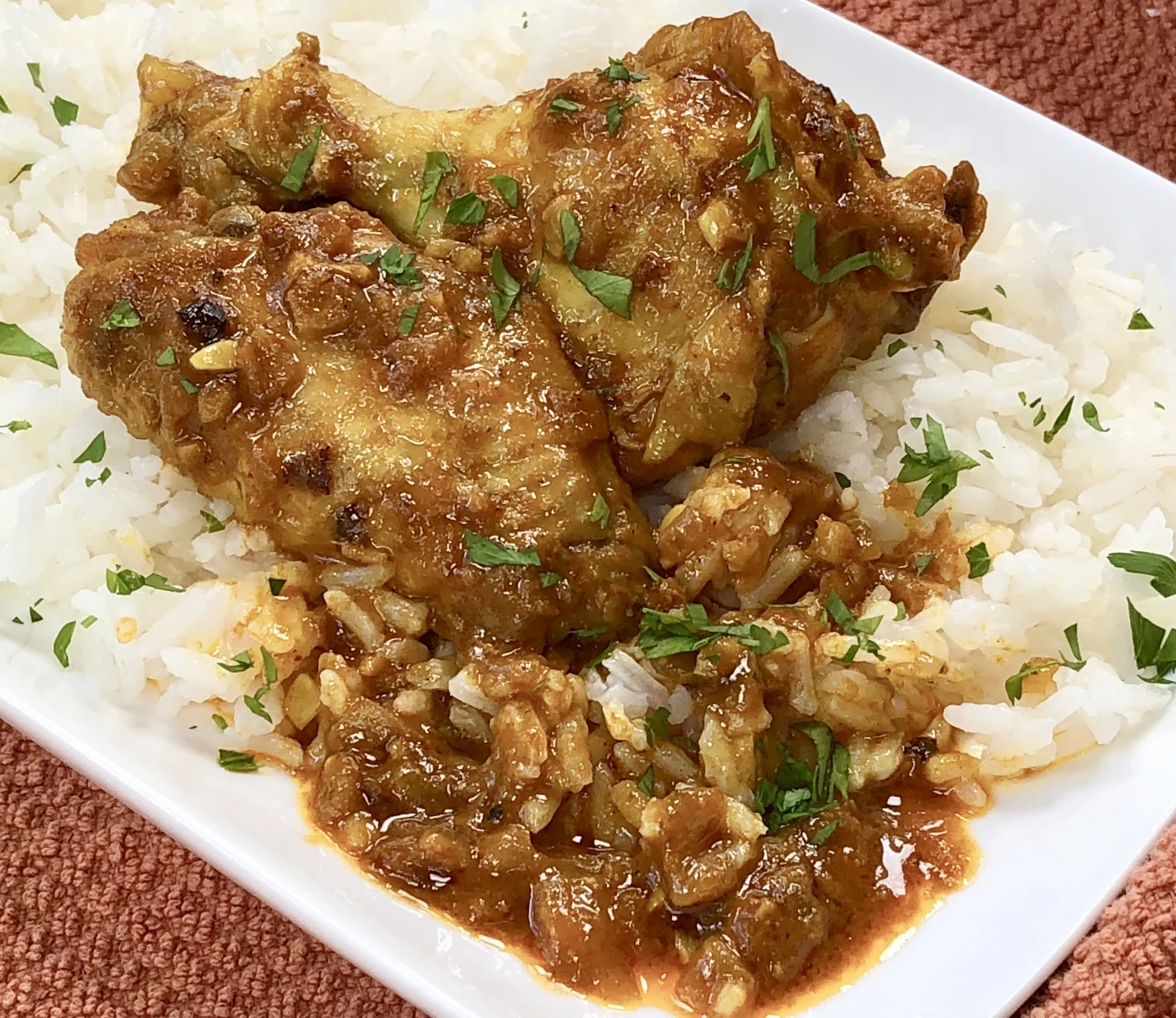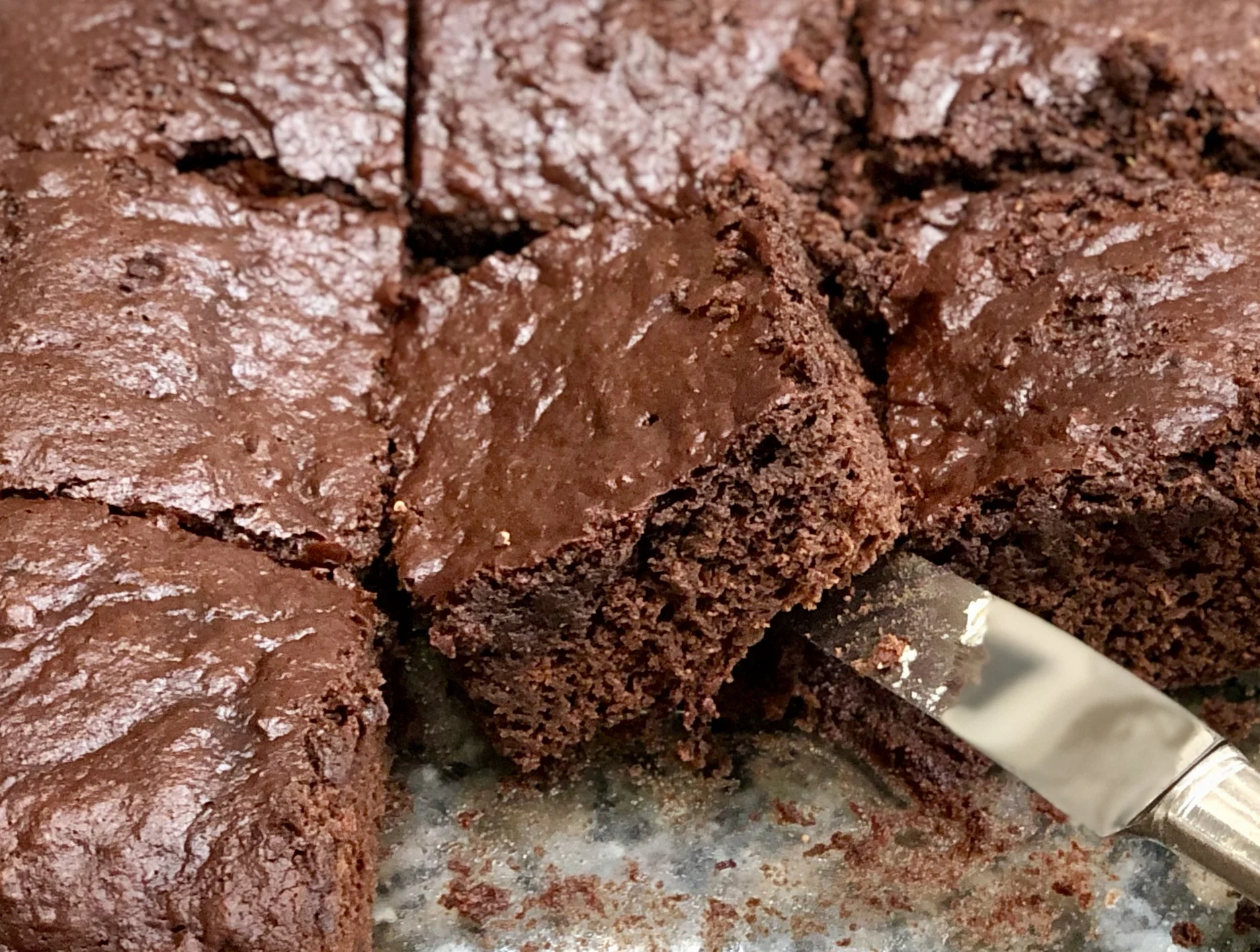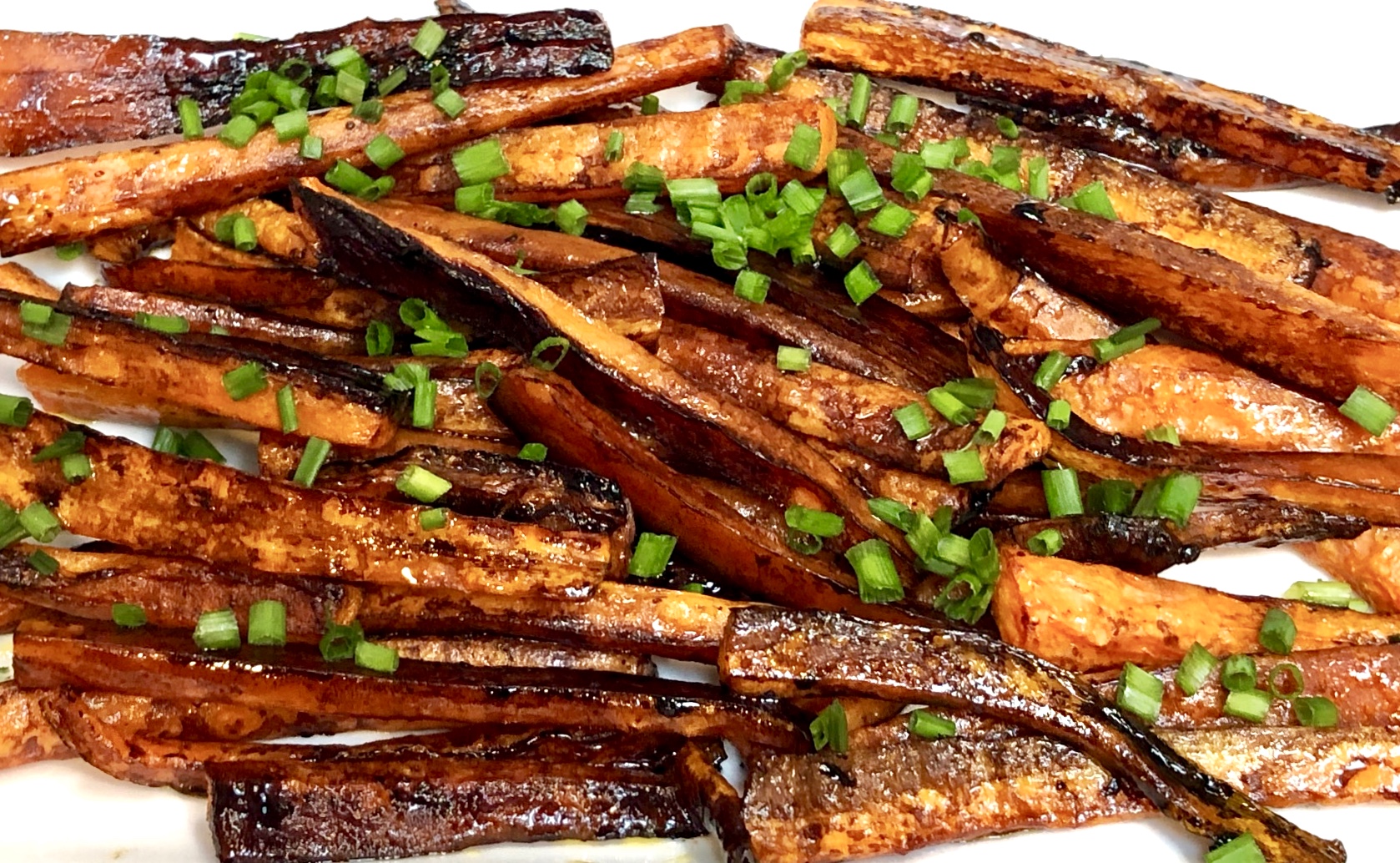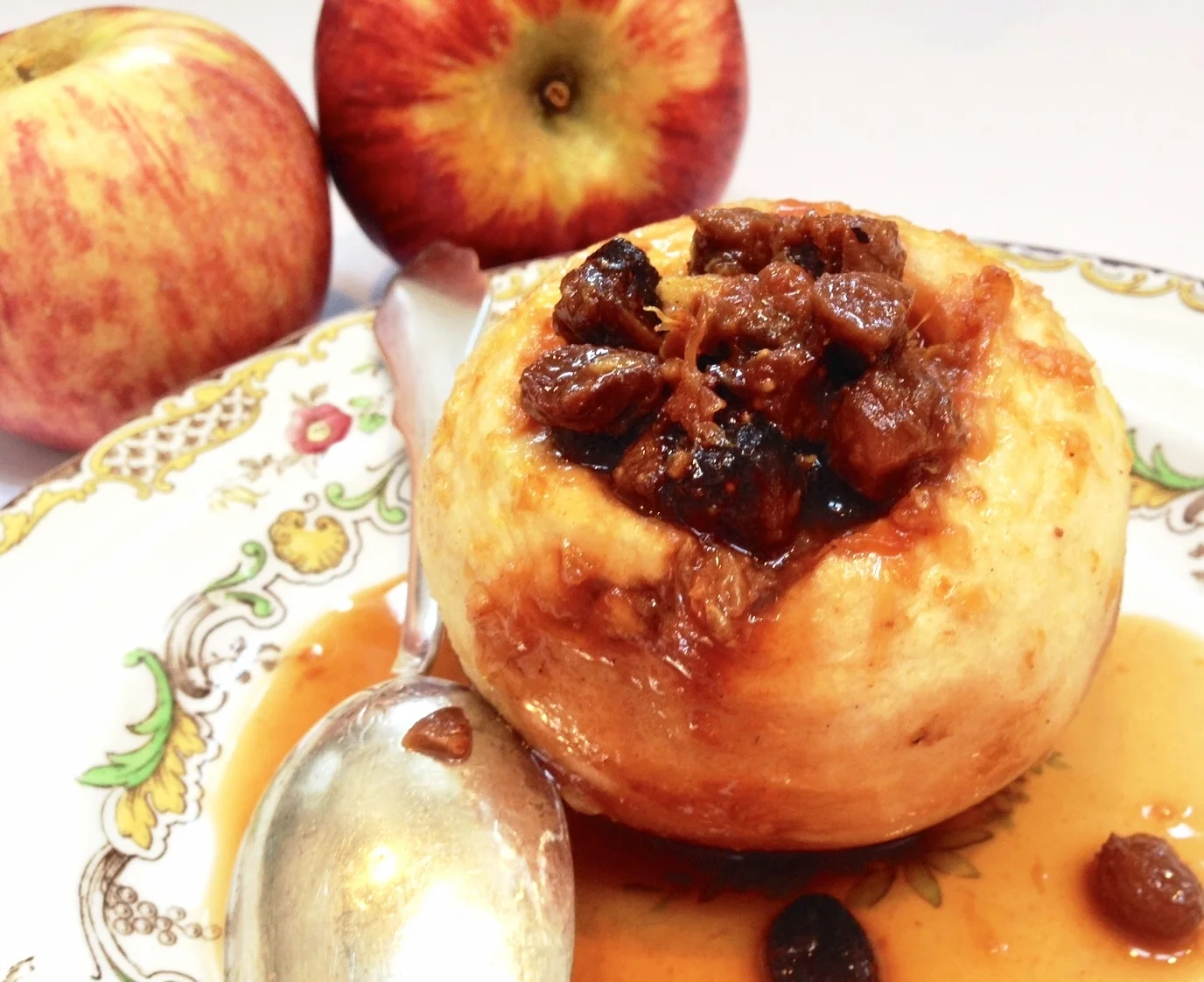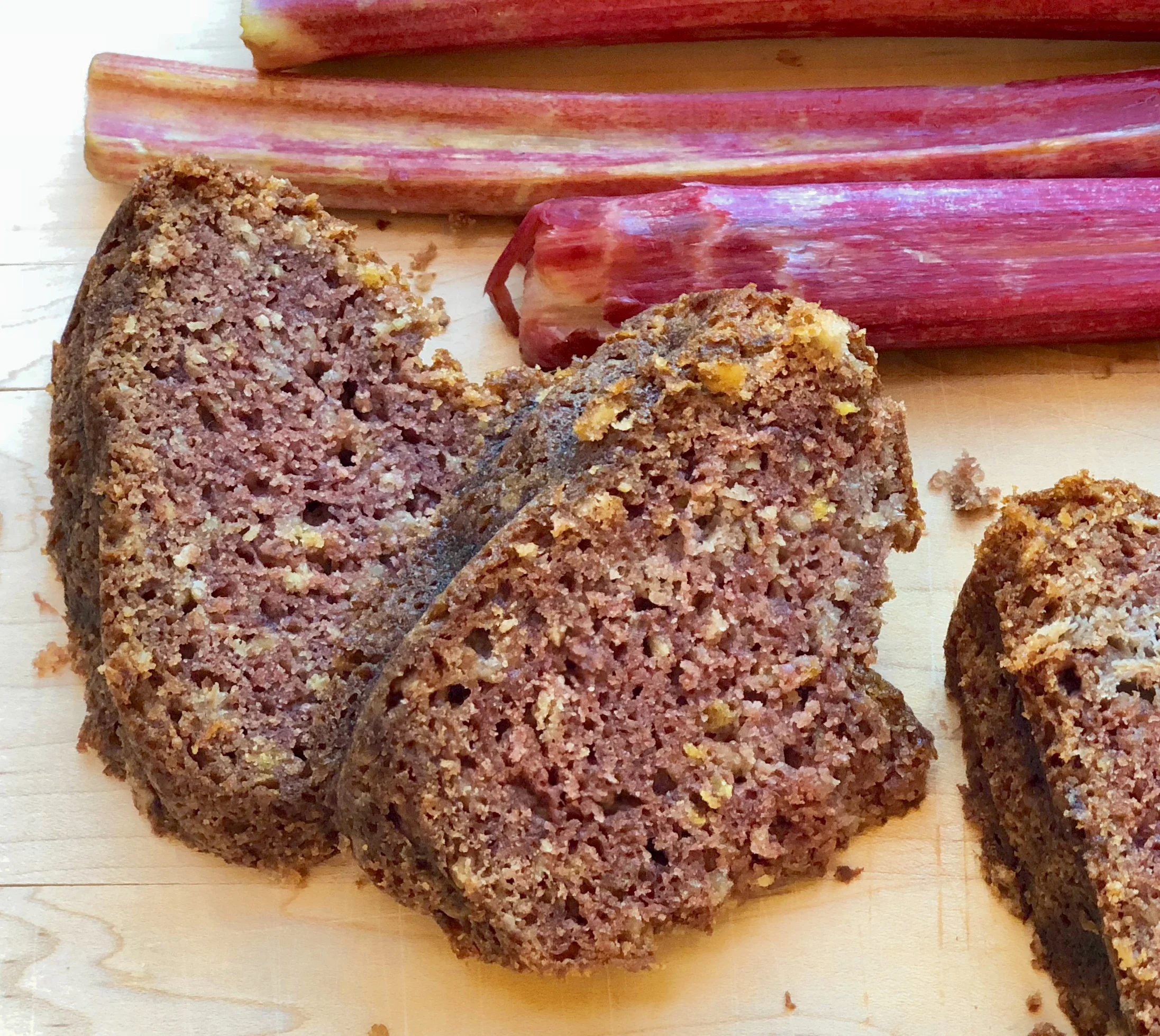For me, the appeal of winter foods is their ability make me feel warm and well-nourished. I don’t expect them to be gorgeous. When I look at dishes such as beef stew or a beloved chicken-and-soup, I don’t see art, I see safety and memory and the expectation of comfort.
This is why, when winter comes, I look for side dishes or desserts or an appetizer that can provide some color or add some beauty to the entree or the meal.
This barley casserole fits the bill. It’s a substantial side dish that works with meat, fish and poultry, with stews and hearty winter casseroles and for vegetarian meals too. It’s colorful and makes for an attractive addition to a winter dinner.
Barley with Carrots, Raisins and Almonds
2 tablespoons olive oil
2-3 carrots, sliced 1/2-inch thick
3-4 scallions, chopped
1 cup pearled barley
2-1/2 cups vegetable stock
salt and freshly ground black pepper to taste
1-1/2 teaspoons chopped fresh thyme
1/2 cup golden raisins
1/2 cup chopped toasted almonds
2 tablespoons chopped fresh parsley
Heat the olive oil in a sauté pan over medium heat. Add the carrots and scallions and cook for about 2 minutes. Add the barley and cook for another 2 minutes, stirring often. Pour in the stock and add the salt, pepper and thyme. Stir, bring to a boil, lower the heat, cover the pan and simmer for about 50 minutes or until all the liquid has been absorbed. Stir in the raisins and almonds and toss gently to distribute the ingredients evenly. Cover the pan and let rest for 5 minutes. Spoon into a serving bowl and sprinkle with parsley.
Makes 6-8 servings
